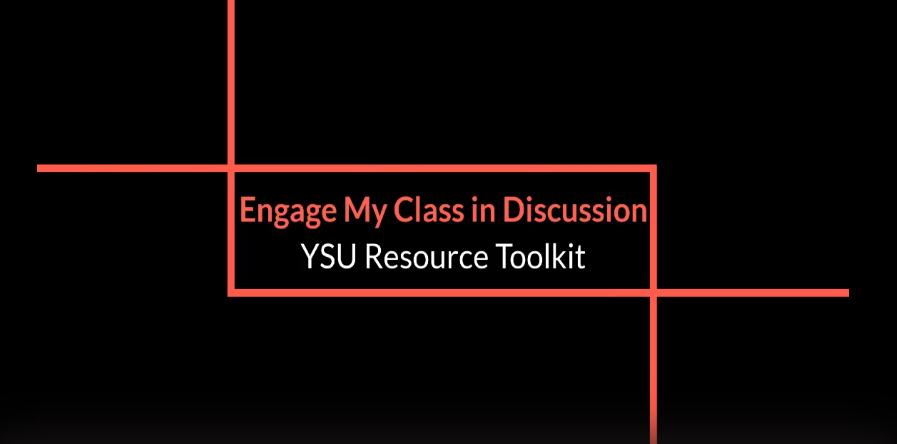-
-
Colleges
-
-
Student Experience Greek Life Housing & Dining Health & Recreation Our Campus Community Engagement Athletics
-
I want to ENGAGE MY CLASS IN DISCUSSION.

Click on the image above to view the video!
This video is a walkthrough of the strategies, technology, and resources found on this outcome webpage. It was recorded during the summer Resource Toolkit Workshop Series (July 2020). You can access the video using your YSU credentials. Please contact atkaufman@ysu.edu if you are unable to access the video.
Effective discussions can foster collaboration as well as increase student engagement and motivation within your course. Students can practice communication skills, connect with classmates, and stimulate critical thinking. Small group discussions and discussion boards, for example, puts increased emphasis on learning rather than teaching.
Below are some examples of tools and best practices when using discussions to engage students.
- Synchronous Discussions
Synchronous discussions, discussions occurring in real-time, can still happen even if students are not all located in the same physical area. Using various features within web-conferencing tools can help bridge the physical gap students may experience.
- Form breakout groups in Blackboard Collaborate (Web Tutorial) for live chatting and group discussion. As the moderator, you can join each group to check on progress, answer questions, and facilitate collaboration. Bring all students back to the main course room to debrief the small discussions.
- Utilize the chat feature strategically. WebEx and Blackboard Collaborate both have a chat function that allows you to communicate individually with students or the entire group. Pose discussion questions both verbally and through the chat window and allow sufficient time for virtual students to think and type their responses. (WebEx, PDF Tutorial; Web Tutorial), (Blackboard Collaborate Video Tutorial; Web Tutorial)
- To mute or unmute? In smaller classes, allow your students to unmute themselves to engage in the conversation and to ask questions verbally. In larger classes, instruct students to mute themselves until called upon to participate.
- Asynchronous Discussions
Asynchronous discussions are an effective way to have your virtual students interact with each other. It also gives students the opportunity to formulate thoughtful answers to your discussion prompts as well as meaningful responses to their peers.
- Use a Blackboard discussion board to allow students to participate on their own schedules and for those who have more limited technology access. (Video Tutorial; Web Tutorial). Convey clear expectations, ask open-ended questions, and give timely feedback in the discussion board. Require students to respond to a peer’s post to increase student to student interaction. This article, 10 Effective Tips for Online Discussions (Simon, 2018), lists tips and best practices for facilitating online discussions through a learning management system discussion board tool.
- Create a discussion board in Blackboard specifically for students to ask and answer questions for each other about the course and technology. This creates a space similar to face-to-face scenarios where students ask each other questions in class.
- Use the post first setting in discussion boards to require students to respond with an original thought first before viewing any other student responses.
- Include this video in your course on online etiquette for your students to watch before their first post to your discussion boards. Access Video.
- Other Strategies
- Create a shared group folder in OneDrive (PDF Tutorial) or shared documents in OneDrive. (PDF Shared Word Tutorial, PDF Shared Excel Tutorial, PDF Shared PowerPoint Tutorial)
- Encourage students to work together on a shared whiteboard. (PDF Tutorial)
